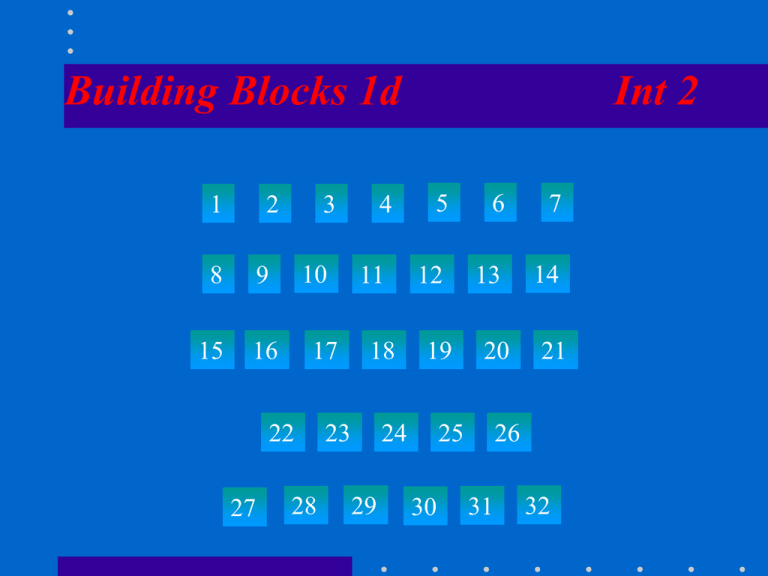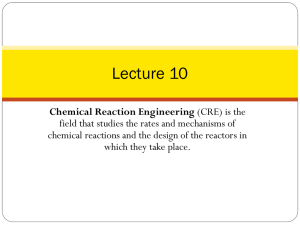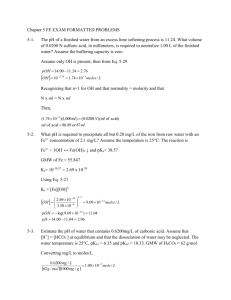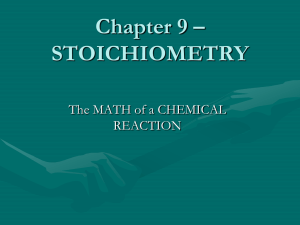Unit 1 d(ii) - Calderglen High School
advertisement

Building Blocks 1d 1 2 8 9 15 16 3 10 17 22 27 28 4 11 18 23 Int 2 5 6 7 12 13 14 19 24 29 20 25 30 21 26 31 32 Which elements are conductors of electricity? Metals and the non-metal carbon(graphite) Which elements are non- conductors of electricity? Non metals except carbon(graphite) Why are metals able to conduct electricity? They contain free moving electrons Which type of compounds (solid, liquid, solution) do not conduct electricity? Covalent compounds (non metals atoms) Why are covalent compounds unable to conduct electricity? They are made up of molecules which are uncharged. They do not contain charged ions. In which state will an ionic compound not conduct electricity? solid Why are ionic compounds able to conduct electricity when molten or in solution? They ions are free to move Why do ionic compounds not conduct electricity when solid? They ions are not free to move A solid substance conducts electricity. What type of substance is it? Metal or carbon(graphite) (no compound conducts when solid) A substance does not conduct when solid but is able to conduct when molten/solution. What type of substance is it? Ionic Metal/non-metal compound A substance does not conduct electricity in any state. What type of substance is it? Covalent A substance does not conduct electricity in any state and has a very high melting/boiling point. What type of substance is it? Covalent network A substance does not conduct electricity in any state and has a low melting/boiling point. What type of substance is it? Covalent molecule Are ionic compounds usually soluble or insoluble in water? soluble Are covalent compounds usually soluble or insoluble in water? Insoluble What is electrolysis? The breaking up of an ionic compound using electricity. What is an electric current? A flow of electrons A pupil passed electricity through copper chloride solution. What would be seen at the negative electrode? Brown solid/copper metal - positive metal ions are attracted to the negative electrode. Chlorine gas(bubbles of gas would be seen at the positive electrode chloride ions are negative. A pupil passed electricity through copper chloride solution. Write ion electron equations showing the formation of copper and the formation of chlorine .? At negative electrode: Cu2+ + 2e- At positive electrode: 2Cl- Cu Cl2 + 2e- Why must a d.c supply be used in electrolysis? So that the products can be identified. So only one product is collected/given off at an electrode. Are electrons gained or lost at the negative electrode? Positive metal ions gain electrons. Write the formula for the followingcarbon monoxide, nitrogen dioxide, sulphur trioxide, dinitrogen tetraoxide, carbon tetrachloride, CO NO2 N2O4 SO3 CCl4 Write the formula for the following lithium chloride, magnesium nitride, aluminium nitride, sodium sulphide LiCl Mg3N2 AlN Na2S Write the formula for the following iron(II) oxide, copper(I) oxide, Silver(I) chloride, iron(III)chloride FeO Cu2O AgCl FeCl3 Write the formula for the following sodium sulphate, copper carbonate, magnesium hydroxide, ammonium carbonate, calcium nitrate Na2SO4 CuCO3 Mg(OH)2 (NH4)2CO3 Ca(NO3) Balance to following equations C3H8 + O2 CO2 + H2O Al + Cl2 AlCl3 CaCO3 + HCl CaCl2 + CO2 + H2O C3H8 + 5 O2 3 CO2 + 4 H2O 2Al + 3Cl2 2AlCl3 CaCO3 + 2HCl CaCl2 + CO2 + H2O Calculate the formula mass of the following CH4 H2O Na2 SO4 Ca(NO3)2 CH4 12 + 4 =16 H2O (2 x 1) + 16 = 18 Na2 SO4 (2 x 23) + 32 + (4 x16) = 142 Ca(NO3)2 40 + (2 x 14) + (6 x 16) =164 Calculate one mole of the following Cl2 CaCO3 CO2 Mg(OH)2 Cl2 2 x 35.5 = 71g CaCO3 40 + 12 + (3x16) = 100g CO2 12 + (2 x 16) = 44g Mg(OH)2 24.5 + (2 x 16) + (2 x 1) = 58.5 g Calculate the number of moles in the following 88g CO2 10g CaCO3 10.1g KNO3 16g O2 1 mole CO2 = 12 + (2 x 16) = 44g 88/44 = 2 moles 1 mole CaCO3 = 40 + 12 + (3 x 16) = 100g 10/100 = 0.1 moles 1 mole KNO3 = 39 + 14 + (3 x 16) = 101g 10.1/101 = 0.1 moles 1 mole O2 = 2 x 16 = 32 g 16/32 = 0.5 moles Calculate the mass of the following 4 moles HCl 0.1 moles H2S 0.25 moles CaCO3 0.5 moles (NH4)2SO4 1mole HCl = 1 x 35.5 = 36.5g 4 moles = 4 x 36.6 = 146g 1mole of H2S = (2 x 1) + 32 = 34 g 0.1 moles = 0.1 x 34 = 3.4g 1 moles CaCO3 = 40 + 12 + (3 x 16) = 100g 0.25 moles = 0.25 x 100 = 25g 1 mole (NH4)2SO4 = (2 x 14) + (8 x 1) + 32 + (4 x 16) = 132g 0.5 moles = 0.5 x 132 = 66g Calculate the mass of carbon dioxide is produced when 4g of methane burns completely in oxygen. CH4 + 2O2 CO2 + 2H2O 1 mole of CH4 produced 1 mole of CO2 if 16g gives 44g then 4g gives 4/16 x 44 = 11g ( 4g is a 1/4 of 16g so a 1/4 of 44g is 11g) Calculate the mass of water produced on burning 2.8g of ethene. C2H4 + 3O2 2CO2 + 2H2O 1 moles of ethene C2H4 produced 2 moles water H2O 28g (1 mole) gives 36g (2 moles) 2.8g gives 2.8/28 x 36 = 3.6g ( 2.8g is a tenth of 28g so a tenth of 36g is 3.6g Building Blocks 1d 1 2 4 3 10 5 6 7 12 13 14 8 9 15 16 17 18 19 20 22 23 24 25 26 27 28 11 Int 2 29 30 31 21 32









